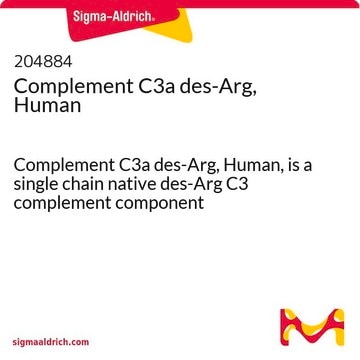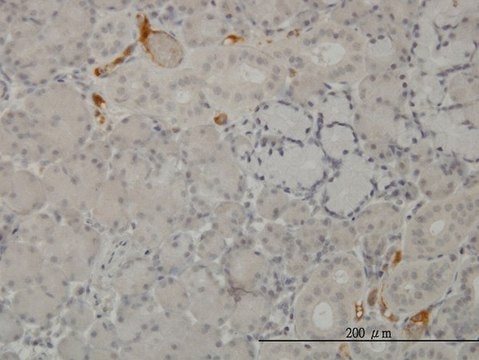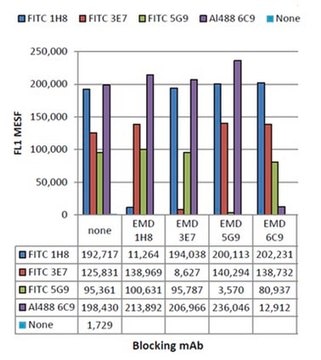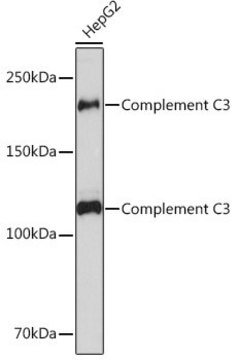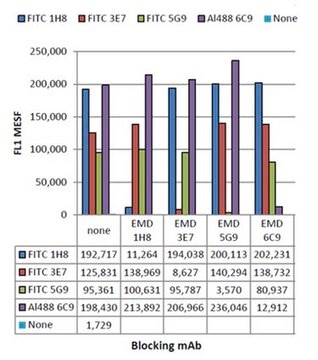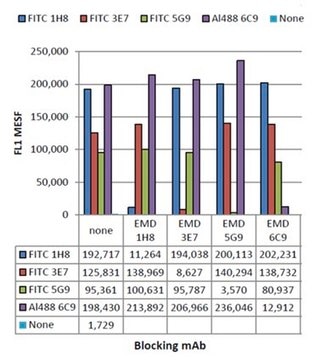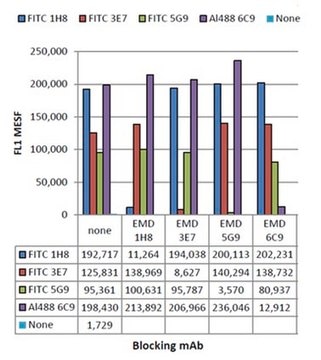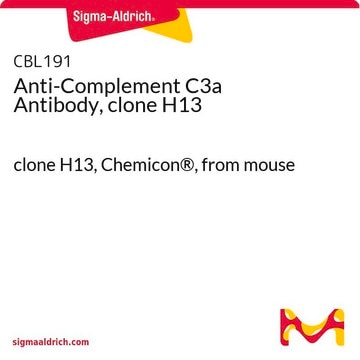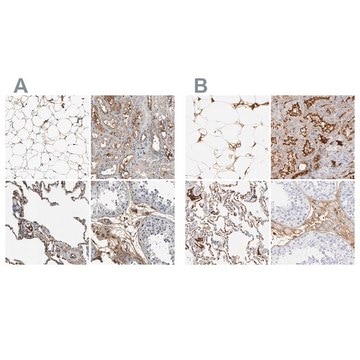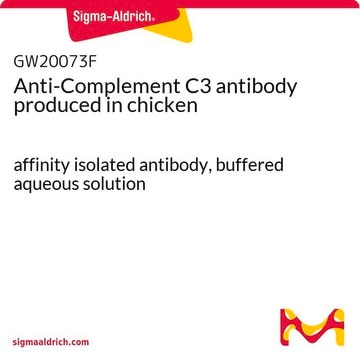MABF1978
Anti-Complement C3a/C3a (desArg) Antibody, clone K13/16
clone K13/16, from mouse
Synonym(s):
Complement C3a, C3 and PZP-like alpha-2-macroglobulin domain-containing protein 1
About This Item
Recommended Products
biological source
mouse
Quality Level
antibody form
purified antibody
antibody product type
primary antibodies
clone
K13/16, monoclonal
species reactivity
human
packaging
antibody small pack of 25 μL
technique(s)
flow cytometry: suitable
immunohistochemistry: suitable (paraffin)
neutralization: suitable
isotype
IgG1κ
NCBI accession no.
UniProt accession no.
shipped in
ambient
target post-translational modification
unmodified
Gene Information
human ... C3(718)
Related Categories
General description
Specificity
Immunogen
Application
Agonist or Inhibitor Analysis: Administration of C3a induces a transient influx of Ca2+ release in a dose dependent manner (fluo-3 staining on human PMNs). In this regard, it functions as an agonist for the C3a receptor (Elsner, J., et. al. (1994). Blood. 83(11):3324-31).
Neutralizing Analysis: A representative lot detected Complement C3a/C3a (desArg) in Neutralizing applications (Elsner, J., et. al. (1994). Blood. 83(11):3324-31).
Flow Cytometry Analysis: A representative lot detected Complement C3a/C3a (desArg) in Flow Cytometry applications (Elsner, J., et. al. (1994). Blood. 83(11):3324-31).
Inflammation & Immunology
Quality
Immunohistochemistry Analysis: A 1:50 dilution of this antibody detected Complement C3a/C3a (desArg) in human kidney tissue sections.
Target description
Physical form
Storage and Stability
Other Notes
Disclaimer
Not finding the right product?
Try our Product Selector Tool.
Certificates of Analysis (COA)
Search for Certificates of Analysis (COA) by entering the products Lot/Batch Number. Lot and Batch Numbers can be found on a product’s label following the words ‘Lot’ or ‘Batch’.
Already Own This Product?
Find documentation for the products that you have recently purchased in the Document Library.
Our team of scientists has experience in all areas of research including Life Science, Material Science, Chemical Synthesis, Chromatography, Analytical and many others.
Contact Technical Service